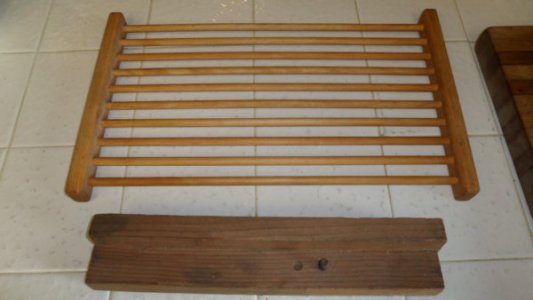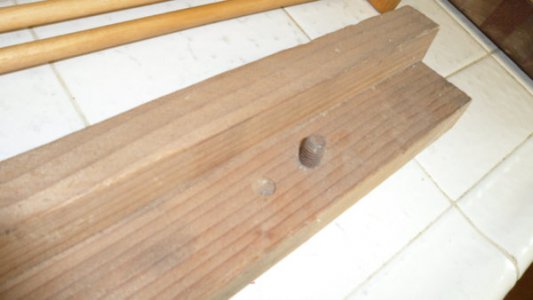- Joined
- Oct 28, 2016
- Messages
- 11
Hi all,
hope I'm in the right forum - this is barely machining, but I need a machinist's mindset for advice.
I am the metalworker for a small custom furniture shop, and lately we are making a lot more designs that rely on bolt connections rather than welding.
I am able to finish the projects, but I can't get the drilling accurate enough to make the parts interchangeable- my most recent example is that I had to make a set of three conference tables. Since the parts couldn't be interchangeable (misalignment by 1/32 here and there), I had to mark every individual piece and mark its orientation, which I felt was sort of a waste of time, a brain cramp to not mix up, and will make installation a little less straightforward for the install team.
Basically, I'm asking all for help, ideas, and brainstorming on how to standardize my drilling process to be a little less custom and individual, so that I have to mark every side of everything every time. But who knows, maybe this is just how things are and I just have to get used to it?
I'm attaching a photo of a perfect example of my drill bit not catching my center punch mark, and drilling misaligned holes. Why?! It's gotta be something obvious that I'm missing? maybe I have to sharpen up those centerpunches? Do I really have to make a jig for almost everything? I know to centerpunch for the drill bit to catch, but I still have a hard time making that drill bit catch instead of slide around the punched dimple. Maybe I'm not punching a big enough dimple? I've read that people will start their holes at 1/4" but it seems maybe I have to start even smaller to end at an accurate enough 1/4" hole.
I'm also attaching 2 photos of the conference table legs I was working on --- I used a steel jig I welded together to mark the holes on the legs, and then I used the line up of the legs as a jig to mark the holes on the long support runners. Maybe projects like this have to end up being very individual, steel warps and bows and is never perfect to begin with. Or maybe I should have enlarged all holes on the runners by 1/16" or so"? During the build, I resisted enlarging all holes, only enlarging when I had to, because the tighter the hole, the better the table pieces fall into square. What do you think? I feel like there must be an easier way that I haven't thought of.
Thanks so much to all who share any thoughts! It's really appreciated, I promise to come back to the forum and leave my own advice where I can in return.
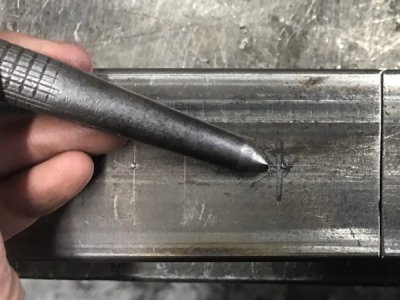
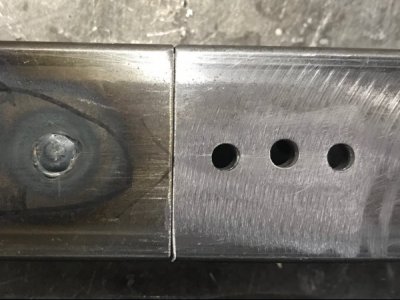
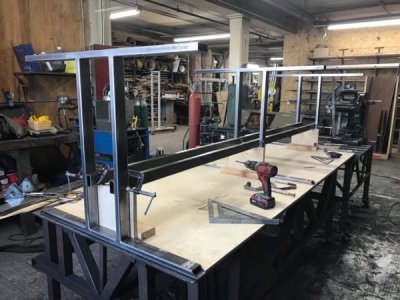
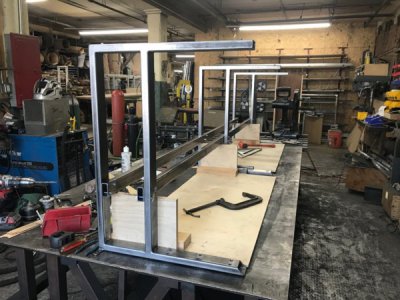
hope I'm in the right forum - this is barely machining, but I need a machinist's mindset for advice.
I am the metalworker for a small custom furniture shop, and lately we are making a lot more designs that rely on bolt connections rather than welding.
I am able to finish the projects, but I can't get the drilling accurate enough to make the parts interchangeable- my most recent example is that I had to make a set of three conference tables. Since the parts couldn't be interchangeable (misalignment by 1/32 here and there), I had to mark every individual piece and mark its orientation, which I felt was sort of a waste of time, a brain cramp to not mix up, and will make installation a little less straightforward for the install team.
Basically, I'm asking all for help, ideas, and brainstorming on how to standardize my drilling process to be a little less custom and individual, so that I have to mark every side of everything every time. But who knows, maybe this is just how things are and I just have to get used to it?
I'm attaching a photo of a perfect example of my drill bit not catching my center punch mark, and drilling misaligned holes. Why?! It's gotta be something obvious that I'm missing? maybe I have to sharpen up those centerpunches? Do I really have to make a jig for almost everything? I know to centerpunch for the drill bit to catch, but I still have a hard time making that drill bit catch instead of slide around the punched dimple. Maybe I'm not punching a big enough dimple? I've read that people will start their holes at 1/4" but it seems maybe I have to start even smaller to end at an accurate enough 1/4" hole.
I'm also attaching 2 photos of the conference table legs I was working on --- I used a steel jig I welded together to mark the holes on the legs, and then I used the line up of the legs as a jig to mark the holes on the long support runners. Maybe projects like this have to end up being very individual, steel warps and bows and is never perfect to begin with. Or maybe I should have enlarged all holes on the runners by 1/16" or so"? During the build, I resisted enlarging all holes, only enlarging when I had to, because the tighter the hole, the better the table pieces fall into square. What do you think? I feel like there must be an easier way that I haven't thought of.
Thanks so much to all who share any thoughts! It's really appreciated, I promise to come back to the forum and leave my own advice where I can in return.





